Don’t be intimidated by fresh artichokes! These thistles may look prickly, but once trimmed and cook, their mild, nutty flavor shines, and they can be simmered, pureed, stuffed, fried, grilled and even shaved and eaten raw. Read on for our best tips for working with the vegetable, then find some simple ways to prepare them this season, straight from the Williams-Sonoma Test Kitchen.
Artichokes: Everything You Need to Know
How to Select Artichokes
Buy heavy vegetables with tightly closed, olive green leaves and moist, healthy stems. A few purple streaks on the leaves are okay, but limp, brownish globes should be skipped. Baby artichokes should be olive green with tightly closed leaves.
Artichoke Varieties
While many relish large artichokes, which have more of the vegetable to enjoy, baby artichokes (which are not immature, but simply small ones grown lower down on the plant) are gaining in popularity for their more delicate flavor and texture. Although both varieties require some trimming, you won’t need to wrestle with removing the choke of an immature artichoke, which is negligible in the small vegetables—a huge plus in the prepping department. See our one-minute tutorial for trimming baby artichokes.
How to Prep Artichokes
To trim baby artichokes, start at the base, and pull off and discard the tough outer leaves until you reach the tender yellow inner leaves. Cut the stem off flush with the bottom of the leaves and discard it, too. Use a serrated knife to slice off the top 1 to 2 inches of the remaining leaves to remove the thorns. Cut the artichoke in half lengthwise through the center. Using a teaspoon, scrape out the furry choke and drop the halves into a bowl of lemon water. If your recipe calls for quartered artichokes, cut each half lengthwise and then drop the quarters into the lemon water.
To trim mature artichokes, pull off and discard any small leaves near the artichoke base. Cut off the stem flush with the base and discard it, too. Use a serrated or chef’s knife to cut off the top 1 to 2 inches of the remaining leaves to remove the thorns. Using kitchen shears, cut off the prickly tops of the remaining leaves.
Use only stainless-steel knives and cookware when prepping, since carbon steel, aluminum and cast iron will discolor them soon after they are cut. Don’t be alarmed if they do turn a darker color; the discoloration won’t affect their flavor.
How to Store Artichokes
To store, sprinkle with a few drops of water and stow away in a perforated plastic bag in the coldest part of the refrigerator for up to a week. If you’re cooking them on the same day you buy them, leave them at cool room temperature.
Recipes
There are more than 80 artichoke recipes on our website. Here are a few of our easy favorites:
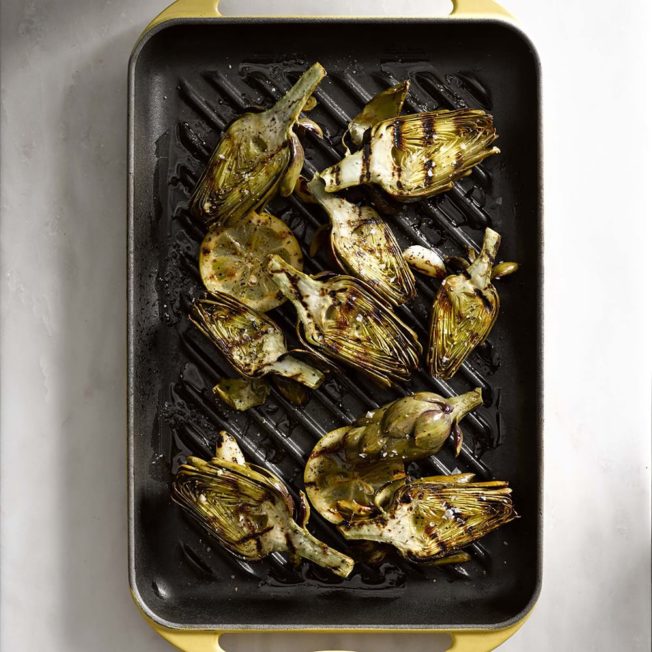
This recipe for grilled baby artichokes calls for steaming the vegetables first, then throwing them on the grill to enhance their distinctive earthy flavor. For a more indulgent treat, serve them with mayonnaise, aioli or melted butter.
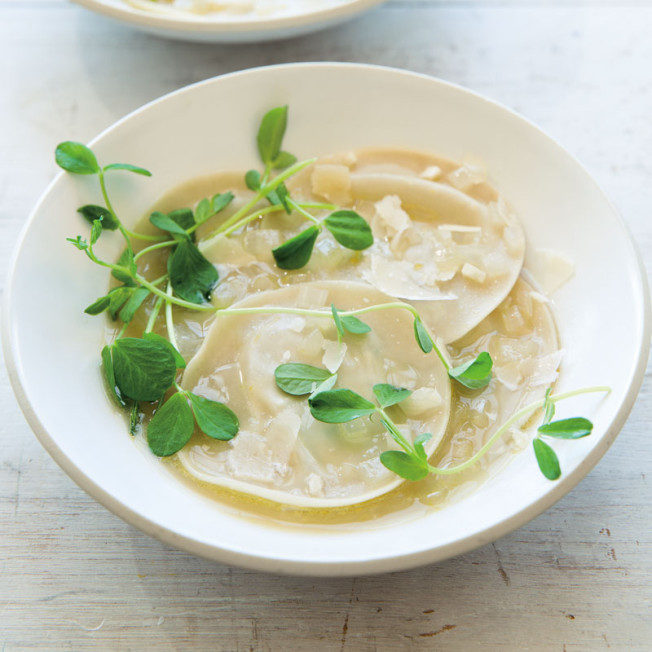
The spring thistle’s vegetal flavor plays a starring role in our elegant Artichoke-Lemon Ravioli, which come with a light, fragrant vegetable broth.
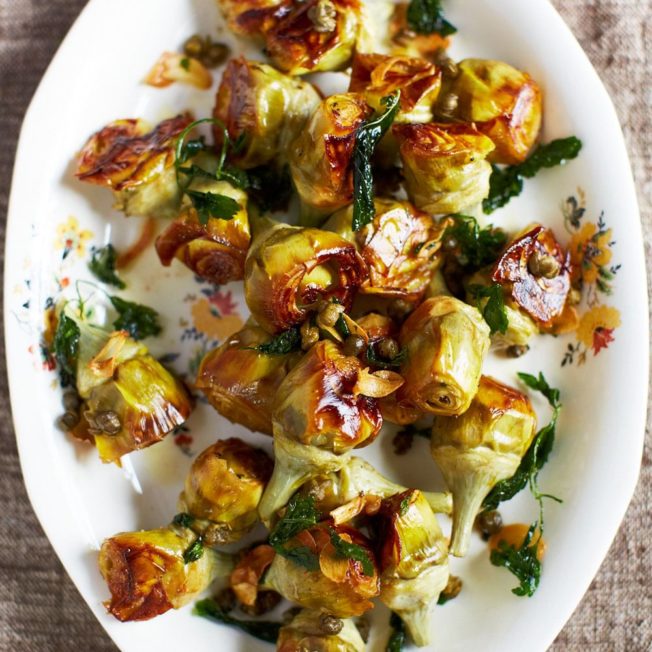
Once you’ve schooled yourself in how to prep baby artichokes, use the tender hearts to make chef April Bloomfield’s Pot-Roasted Artichokes with White Wine and Capers.
Simple Preparations
Raw Artichoke Salad: Thinly slice artichoke hearts with a mandoline. Toss with olive oil, plenty of lemon juice, Parmesan shavings, salt and pepper.
Fried Baby Artichokes: Trim and halve baby artichokes and soak in buttermilk. Dredge in a mixture of equal parts regular and semolina flour. Pour 1 inch of canola oil in a pan and heat to 375°F. Fry in batches until golden and crispy. Drain and serve with aioli.
Braised Artichokes: Trim, remove chokes and slice into halves. Cover the bottom of a baking dish with lemon slices, top with artichokes and pour in chicken stock or white wine to within 1 inch of dish rim. Season with salt and pepper, seal with foil and bake until tender in a 400°F oven.
Artichoke Spread: Pulse cooked artichoke hearts in a food processor with garlic, lemon, olive oil and parmesan cheese. Spread on toasts or sandwiches.
Baked Stuffed Artichokes: Trim artichokes; sprinkle with olive oil, salt and pepper. Place in baking dish. Combine toasted bread crumbs, chopped parsley, grated pecorino, olive oil, minced garlic, lemon zest, salt and pepper. Stuff into center and between leaves. Add 1/2 cup water to pan; cover with foil. Bake at 400°F until tender. Uncover; bake until browned.
Marinated Baby Artichokes: Trim and halve baby artichokes. Blanch until tender. Drain well; cool to room temperature. Place in jar. Add chopped fresh herbs, garlic, lemon zest and chile flakes; cover with olive oil. Refrigerate and use within 1 week.
Whole Mature Artichokes: Pour 2 inches of water into a large pot, add a steamer basket, and bring the water to a boil over high heat. Add trimmed (see above) whole artichokes to the steamer basket. Cover the pot, reduce the heat to medium, and continue to boil until the leaves of the artichokes are easy to remove with a gentle tug and the bottoms are tender when pierced with the tip of a knife, 25 to 35 minutes, depending on size.
Looking for more artichoke goodness? Find more artichoke recipes and creative ways to prepare spring produce.

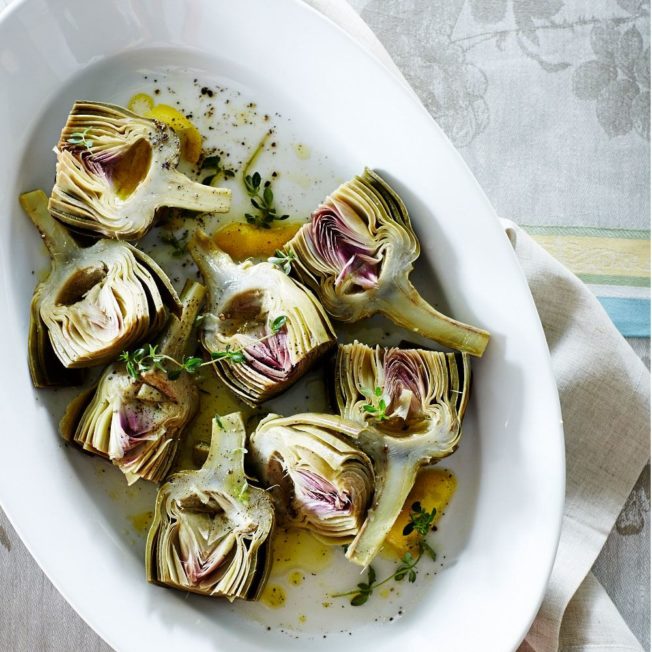
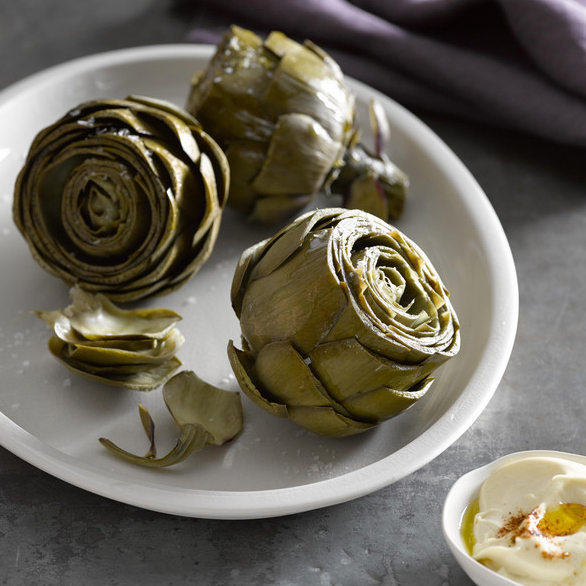
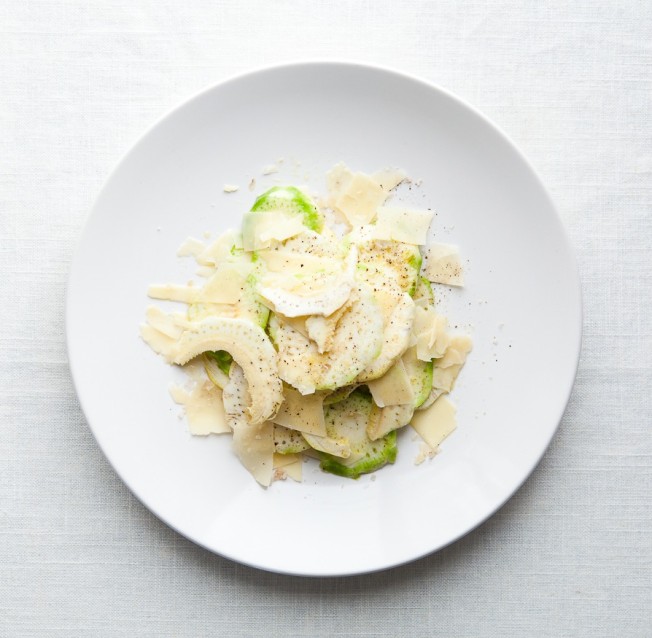
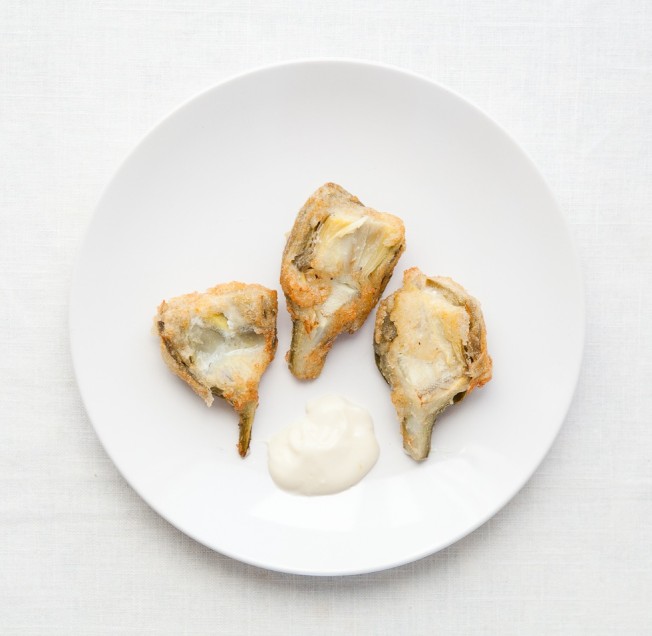
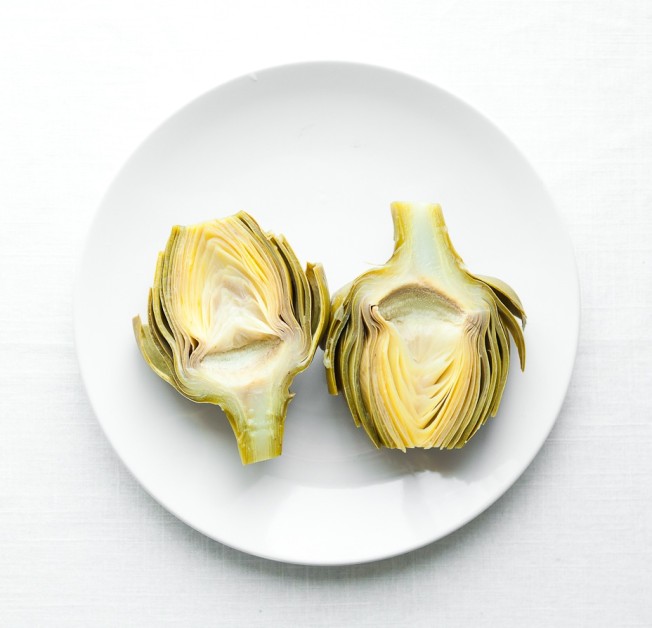
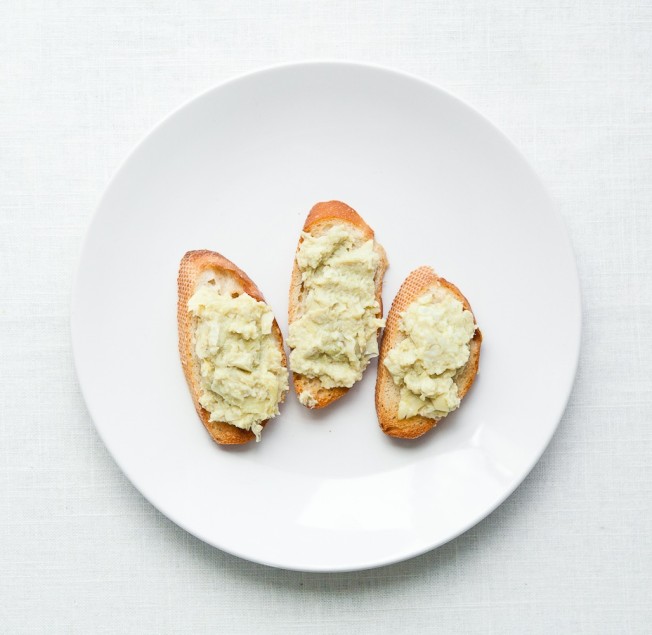
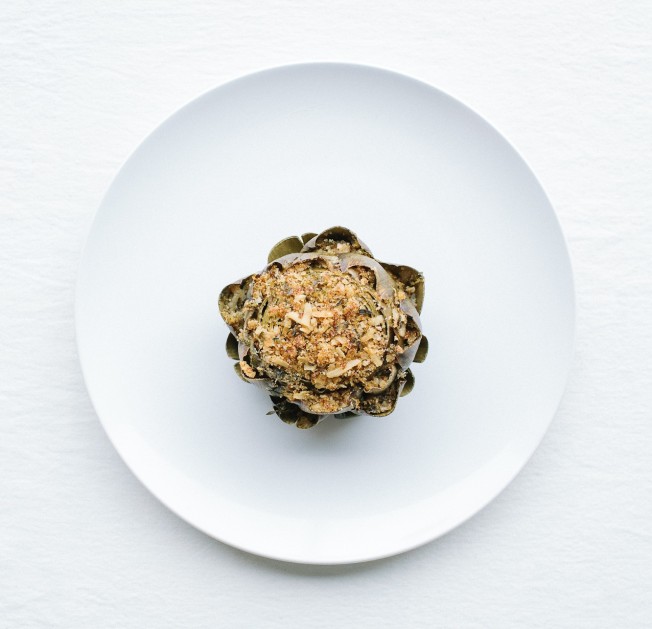
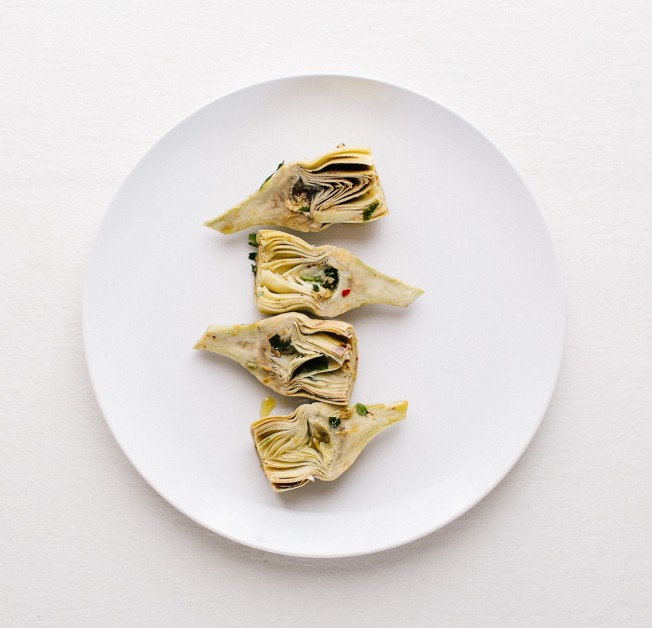
4 comments
I cook them in the microwave for about 15 min. first I wash them with cool water and lemon juice, then pound them on the counter to open the leaves a little bit and get rid of some of the outside ones. After that I pour some good olive oil, fresh ground pepper and thyme inside each one of them. Place them in a microwave-safe dish and cook them covered for about 15 min. You will know they are cooked if you can pull a leave with ease.
I can guarantee they come out just perfect! Such a quick side dish for dinner and just delicious. If you want extra flavour add some bacon chunks or italian sausage between some of the atichoke leaves and cook the same way.
Hope you nejoy them!
Love this idea—thanks for suggesting!
[…] Ingredient Spotlight: Artichokes […]
I’ve never found out what to do with artichokes but boiling them! Thanks for this post.